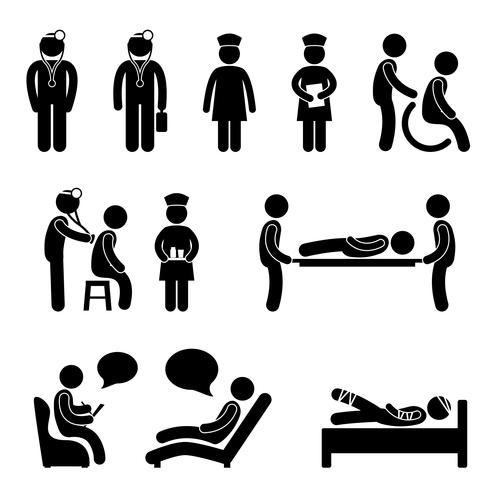How To Be More Emotionally Intelligent
How To Be More Emotionally Intelligent
Blog Article
Just How Do Mood Stabilizers Work?
Mood stabilizers help to relax areas of the mind that are impacted by bipolar affective disorder. These medicines are most effective when they are taken regularly.
It might take a while to locate the appropriate medication that works finest for you and your medical professional will certainly check your condition throughout therapy. This will involve regular blood tests and possibly a change in your prescription.
Neurotransmitter policy
Natural chemicals are a team of chemicals that manage one another in healthy and balanced people. When degrees come to be unbalanced, this can bring about state of mind disorders like depression, anxiety and mania. Mood stabilizers help to avoid these episodes by assisting control the equilibrium of these chemicals in the mind. They likewise might be made use of along with antidepressants to enhance their effectiveness.
Drugs that function as state of mind stabilizers consist of lithium, anticonvulsants and antipsychotics. Lithium is perhaps the most well known of these medications and jobs by impacting the flow of sodium with nerve and muscular tissue cells. It is frequently utilized to deal with bipolar affective disorder, however it can additionally be handy in treating other state of mind problems. Anticonvulsants such as valproate, lamotrigine and carbamazepine are additionally efficient state of mind maintaining drugs.
It can spend some time to locate the appropriate sort of drug and dose for every person. It is very important to deal with your physician and participate in an open discussion about how the drug is working for you. This can be specifically practical if you're experiencing any type of adverse effects.
Ion channel modulation
Ion networks are a significant target of state of mind stabilizers and lots of other drugs. It is currently well established that they are dynamic entities that can be regulated by a range of outside stimulations. Furthermore, the modulation of these channels can have a series of temporal impacts. At one extreme, modifications in gating dynamics might be rapid and immediate, as in the nicotinic acetylcholine receptor/channel system. At the other end of the spectrum, covalent alteration by healthy protein phosphorylation might cause modifications in channel feature that last longer.
The field of ion network modulation is entering a duration of maturity. Current research studies have shown that transcranial focused ultrasound (United States) can promote neurons by activating mechanosensitive potassium and salt channels embedded within the cell membrane layer. This was shown by expressed networks from the two-pore domain name potassium family in Xenopus oocytes, and concentrated US significantly regulated the current flowing via these channels at a holding voltage of -70 mV (appropriate panel, family member impact). The outcomes are consistent with previous observations revealing that antidepressants impacting Kv networks regulate glia-neuron communications to opposite depressive-like habits.
Neuroprotection
Mood stabilizers, talk therapy like lithium, valproic acid (VPA), and carbamazepine, are necessary in the treatment of bipolar illness, which is characterized by recurrent episodes of mania and anxiety. These drugs have neuroprotective and anti-apoptotic buildings that assist to stop cellular damages, and they also improve mobile durability and plasticity in useless synapses and neural circuitry.
These safety activities of mood stabilizers might be mediated by their inhibition of GSK-3, inositol signaling, and HDAC task. Furthermore, long-lasting lithium therapy safeguards versus glutamate excitotoxicity in cultured nerve cells-- a design for neurodegenerative problems.
Studies of the molecular and cellular results of mood stabilizers have revealed that these medications have a vast array of intracellular targets, including numerous kinases and receptors, as well as epigenetic alterations. Further study is required to determine if mood stabilizers have neurotrophic/neuroprotective activities that are cell kind or circuitry certain, and how these impacts might enhance the rapid-acting restorative feedback of these agents. This will aid to create new, faster acting, a lot more reliable treatments for psychiatric diseases.
Intracellular signaling
Cell signaling is the procedure through which cells communicate with their setting and other cells. It includes a series of action in which ligands interact with membrane-associated receptors and result in activation of intracellular paths that manage crucial downstream cellular functions.
State of mind stabilizers act on intracellular signaling with the activation of serine-threonine healthy protein kinases, resulting in the phosphorylation of substrate proteins. This triggers signaling cascades, causing adjustments in gene expression and cellular function.
Lots of state of mind stabilizers (consisting of lithium, valproate and lamotrigine) target intracellular signaling pathways by inhibiting particular phosphatases or triggering details kinases. These results cause a reduction in the task of these paths, which leads to a reduction in the synthesis of particular chemicals that can affect the brain and cause signs and symptoms of clinical depression or mania.
Some state of mind stabilizers additionally function by boosting the task of the inhibitory neurotransmitter gamma-aminobutryic acid (GABA). This enhances the GABAergic transmission in the brain and decreases neural activity, thus creating a soothing impact.